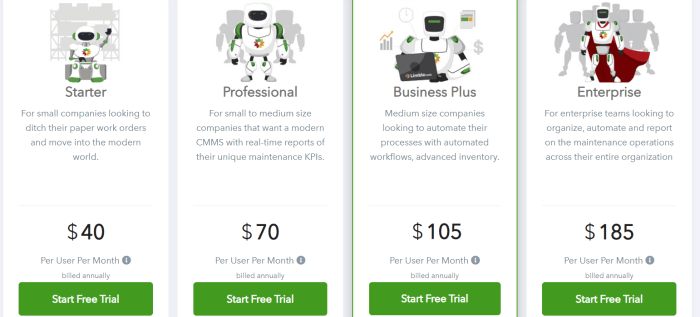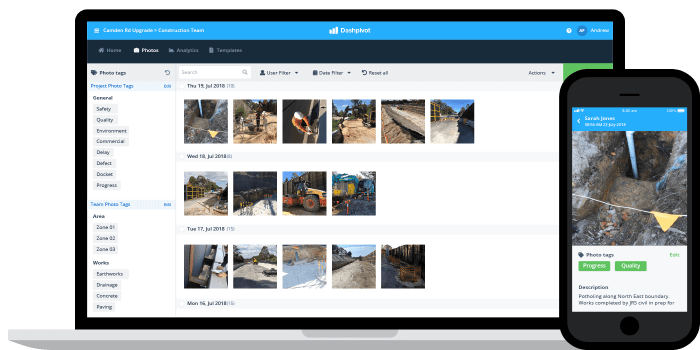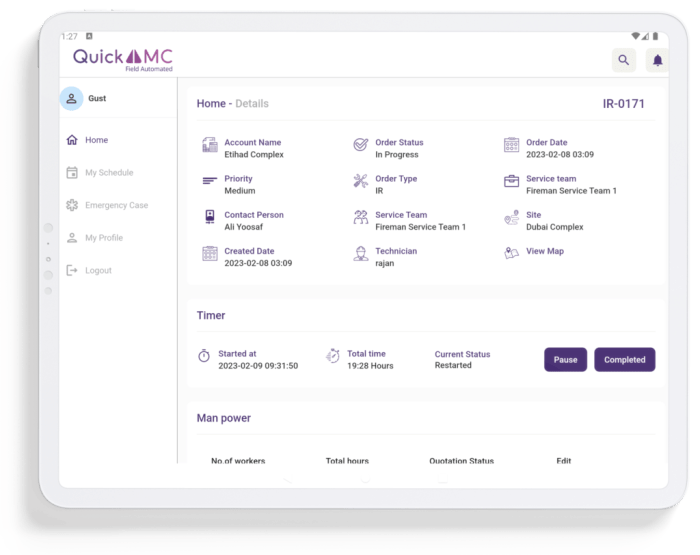Digital work order software is revolutionizing how businesses manage and track tasks. By transitioning from paper-based systems to digital platforms, companies gain significant advantages in efficiency, communication, and overall operational control. This shift allows for real-time updates, automated workflows, and improved collaboration among teams, ultimately leading to increased productivity and reduced costs. The impact extends beyond simple task management; it facilitates better resource allocation, improved customer service, and more accurate reporting.
The benefits are readily apparent across various industries. From field service technicians benefiting from mobile access to work orders to office-based staff enjoying centralized management and tracking, digital work order software offers a comprehensive solution to streamline operations. The flexibility to customize workflows to meet specific business needs further enhances its value, making it a versatile tool for organizations of all sizes.
In today’s fast-paced business environment, efficiency and accuracy are paramount. Digital work order software offers a powerful solution for streamlining operations across various industries, from field service management to manufacturing and beyond. This comprehensive guide delves into the intricacies of this technology, exploring its benefits, features, implementation, and future trends. We’ll also address frequently asked questions to provide a complete understanding of how digital work order management systems can revolutionize your workflow.
What is Digital Work Order Software?
Digital work order software is a centralized system that digitizes the entire work order lifecycle, from creation and assignment to completion and analysis. Unlike traditional paper-based systems, digital platforms offer real-time visibility, improved communication, and enhanced data management capabilities. This translates to reduced administrative overhead, minimized errors, and ultimately, increased profitability.
Key Features of Effective Digital Work Order Software:
- Automated Work Order Creation: Easily generate work orders from various sources, including customer portals, mobile apps, and integrated systems.
- Centralized Scheduling and Dispatching: Optimize resource allocation by assigning work orders to the most appropriate technicians based on skills, location, and availability. Real-time GPS tracking enhances efficiency.
- Mobile Accessibility: Empower field technicians with mobile access to work orders, allowing them to update progress, capture photos and signatures, and access relevant documentation on the go.
- Inventory Management Integration: Track parts and materials used for each job, minimizing waste and improving inventory control. Automated reordering capabilities further enhance efficiency.
- Real-time Reporting and Analytics: Gain valuable insights into operational performance through comprehensive dashboards and customizable reports. Track key metrics such as completion times, technician productivity, and customer satisfaction.
- Customer Communication Tools: Improve customer engagement with features like automated notifications, progress updates, and feedback mechanisms.
- Integration with Other Systems: Seamlessly integrate with existing CRM, ERP, and accounting systems for a unified workflow.
- Customizable Workflows: Tailor the software to your specific business processes and industry requirements.
- Robust Security Features: Protect sensitive data with secure access controls and encryption.
Benefits of Implementing Digital Work Order Software
The transition to digital work order management offers a multitude of benefits, impacting various aspects of your business:
Improved Efficiency and Productivity:
Automation reduces manual tasks, streamlining workflows and freeing up valuable time for more strategic initiatives. Real-time visibility allows for quicker response times and optimized resource allocation.
Reduced Costs:
Minimized paperwork, improved inventory control, and reduced errors translate to significant cost savings. Automated processes eliminate redundancies and improve overall operational efficiency.
Enhanced Customer Satisfaction:
Faster response times, proactive communication, and improved service quality lead to higher customer satisfaction and loyalty. Real-time tracking and updates keep customers informed throughout the entire process.
Better Data-Driven Decision Making:
Comprehensive reporting and analytics provide valuable insights into operational performance, allowing for data-driven decision making and continuous improvement.
Improved Compliance:, Digital work order software
Digital systems often facilitate easier compliance with industry regulations and standards through automated audit trails and documented processes.
Choosing the Right Digital Work Order Software
Selecting the appropriate software requires careful consideration of several factors:

Source: zineddinebk.com
- Industry-Specific Needs: Ensure the software caters to the unique requirements of your industry.
- Scalability: Choose a solution that can adapt to your growing business needs.
- Integration Capabilities: Consider the software’s ability to integrate with your existing systems.
- User-Friendliness: Opt for a system with an intuitive interface that is easy for your team to learn and use.
- Customer Support: Reliable customer support is crucial for addressing any issues or questions that may arise.
- Pricing and Licensing Models: Evaluate different pricing structures to find a solution that fits your budget.
Implementation and Training
Successful implementation involves careful planning and execution. This includes:
- Data Migration: Transferring existing data to the new system accurately and efficiently.
- User Training: Providing comprehensive training to ensure all users understand how to effectively utilize the software.
- Process Optimization: Adapting existing workflows to leverage the capabilities of the new system.
- Ongoing Support: Establishing a system for ongoing support and maintenance.
Future Trends in Digital Work Order Software
The field of digital work order management is constantly evolving. Key trends include:
- Increased AI and Machine Learning Integration: AI-powered features can automate tasks, predict maintenance needs, and optimize resource allocation.
- Enhanced Mobile Capabilities: Expect even more sophisticated mobile applications with augmented reality (AR) and other advanced features.
- Improved Data Analytics and Reporting: More advanced analytics tools will provide deeper insights into operational performance.
- Greater Integration with IoT Devices: Connecting work order systems with IoT devices will enable real-time monitoring and predictive maintenance.
Frequently Asked Questions (FAQ)
- Q: How much does digital work order software cost? A: The cost varies depending on the features, scalability, and vendor. Explore different pricing models to find a solution that aligns with your budget.
- Q: Is digital work order software suitable for small businesses? A: Yes, many vendors offer solutions tailored to small businesses with flexible pricing and easy-to-use interfaces.
- Q: How long does it take to implement digital work order software? A: Implementation time depends on the complexity of your business processes and the chosen software. Proper planning and execution are key to a smooth transition.
- Q: What are the security implications of using digital work order software? A: Reputable vendors prioritize data security with robust measures like encryption and access controls. Choose a vendor with a strong security track record.
- Q: Can digital work order software integrate with my existing systems? A: Many solutions offer seamless integration with popular CRM, ERP, and accounting systems. Check the vendor’s integration capabilities before making a decision.
Conclusion
Digital work order software offers a transformative solution for businesses seeking to optimize operations, reduce costs, and enhance customer satisfaction. By embracing this technology, organizations can gain a competitive edge in today’s dynamic market. Choosing the right software and implementing it effectively are crucial steps towards realizing the full potential of this powerful tool.
References: Digital Work Order Software
While specific software vendors are not named to maintain neutrality, researching “field service management software,” “work order management systems,” and “maintenance management software” will yield numerous reputable providers and comparative reviews. Look for reviews and comparisons on sites like Capterra, G2, and Software Advice.
Call to Action
Ready to streamline your operations and boost efficiency? Explore the available digital work order software options today and discover how this technology can transform your business. Contact a reputable vendor for a demo or consultation to determine the best fit for your specific needs.
In conclusion, the adoption of digital work order software represents a significant step towards modernizing operational processes. The advantages in efficiency, communication, and data management are undeniable, contributing to a more streamlined and profitable business model. By embracing this technology, companies can gain a competitive edge in today’s dynamic market, optimizing workflows and ultimately achieving greater success.

Source: sitemate.com
Query Resolution
What are the typical costs associated with digital work order software?
Costs vary widely depending on the features, scalability, and vendor. Expect a range from subscription-based models with monthly fees to one-time purchases with varying levels of support.

Source: quickamc.com
How can I integrate digital work order software with my existing systems?
Many platforms offer APIs or integrations with popular CRM, ERP, and accounting software. Check the vendor’s specifications for compatibility with your current infrastructure.
What level of technical expertise is needed to use digital work order software?
Most modern solutions are designed with user-friendliness in mind. While some initial training may be required, the interface is typically intuitive and easy to navigate.
What security measures are in place to protect sensitive data?
Reputable vendors prioritize data security with measures like encryption, access controls, and regular security audits. It’s crucial to review a vendor’s security policies before implementation.